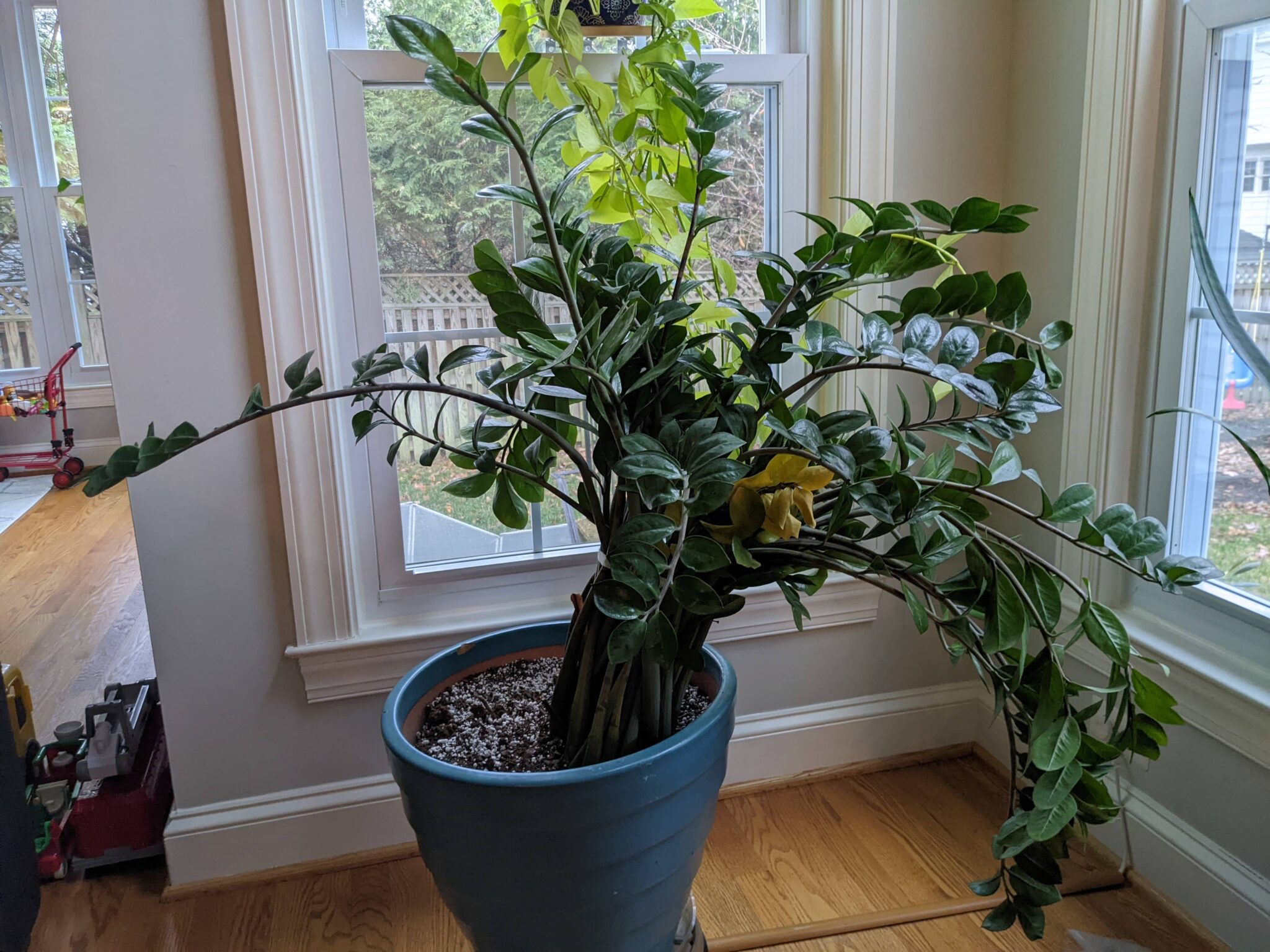My ZZ plant is drooping, and I’m at a loss for what to do. These resilient plants are known for their hardiness, but even they can succumb to problems that cause their leaves to wilt and droop. In this article, we’ll explore the potential causes of a drooping ZZ plant and provide a comprehensive guide to troubleshooting and care to help your plant thrive once again.
ZZ plants, scientifically known as Zamioculcas zamiifolia, are native to Africa and are prized for their low maintenance and ability to tolerate neglect. However, certain environmental factors and cultural practices can lead to drooping leaves, which can be a sign of distress and require attention.
Troubleshooting Drooping ZZ Plant: My Zz Plant Is Drooping

ZZ plants are known for their resilience, but they can also experience drooping leaves. To identify the cause of the drooping, follow this step-by-step troubleshooting guide.
Check for Signs of Underwatering
- The soil is dry to the touch.
- The leaves are dry and brittle.
- The stems are wrinkled.
Check for Signs of Overwatering
- The soil is soggy or waterlogged.
- The leaves are yellowing or wilting.
- The stems are soft and mushy.
Check for Light Issues
- The plant is not receiving enough light.
- The leaves are pale or yellowing.
- The stems are elongated or leggy.
Inspect for Pests or Diseases
- Look for signs of pests, such as aphids, mealybugs, or spider mites.
- Check for signs of diseases, such as root rot or leaf spot.
- Examine the roots for any damage or discoloration.
Care and Maintenance for ZZ Plants

ZZ plants are known for their resilience and low maintenance requirements, but providing proper care can ensure optimal growth and prevent issues like drooping. Here’s a comprehensive guide to ZZ plant care, including watering, light, fertilization, and other essential aspects:
Watering
ZZ plants are drought-tolerant and do not require frequent watering. Allow the soil to dry out completely between waterings. Overwatering is a common cause of drooping in ZZ plants, as it can lead to root rot. Use a moisture meter or your finger to check soil moisture before watering.
Light Requirements
ZZ plants prefer bright, indirect light but can tolerate low-light conditions. Avoid placing them in direct sunlight, as this can scorch the leaves. If your ZZ plant is not getting enough light, it may become leggy and develop weak stems.
Fertilization
ZZ plants do not require frequent fertilization. Fertilize them once a month during the growing season (spring and summer) with a balanced liquid fertilizer diluted to half strength. Avoid overfertilizing, as this can damage the roots.
Drainage and Humidity, My zz plant is drooping
ZZ plants require well-draining soil to prevent waterlogging. Use a potting mix specifically designed for succulents or cacti. Good drainage allows excess water to drain away, preventing root rot. ZZ plants prefer moderate humidity, but they can tolerate dry air. Misting the leaves occasionally can help increase humidity.
Temperature and Humidity
ZZ plants prefer temperatures between 65-75°F (18-24°C). Avoid exposing them to temperatures below 55°F (13°C) or above 85°F (29°C). ZZ plants can tolerate a wide range of humidity levels, but they prefer moderate humidity. Misting the leaves occasionally can help increase humidity.

My ZZ plant has been drooping lately, and I’m not sure why. I’ve checked the soil moisture, and it’s not too wet or too dry. I’ve also checked for pests, and I don’t see any. I’m starting to think that the problem might be with the light.
ZZ plants need bright, indirect light, so I’m going to move it to a spot where it will get more light. If that doesn’t work, I might try repotting it in a larger pot with fresh soil. In the meantime, I’m going to check out the john creech sedum plant . It’s a beautiful plant that’s also very easy to care for.
Maybe it will give me some ideas on how to revive my ZZ plant.
My ZZ plant has been drooping lately, and I’m not sure why. I’ve been watering it regularly, but it doesn’t seem to be perking up. I’ve heard that the five finger grass plant is a good companion plant for ZZ plants, so I’m going to try planting one next to it.
Hopefully, that will help my ZZ plant get back on its feet.
As I noticed my ZZ plant drooping, I couldn’t help but recall the remarkable poached egg plant seeds I had recently learned about. Poached egg plant seeds , known for their unique appearance and adaptability, reminded me of the resilience I needed to restore my ZZ plant’s health.
Just as these seeds can thrive in various conditions, so too could my ZZ plant with proper care and attention.